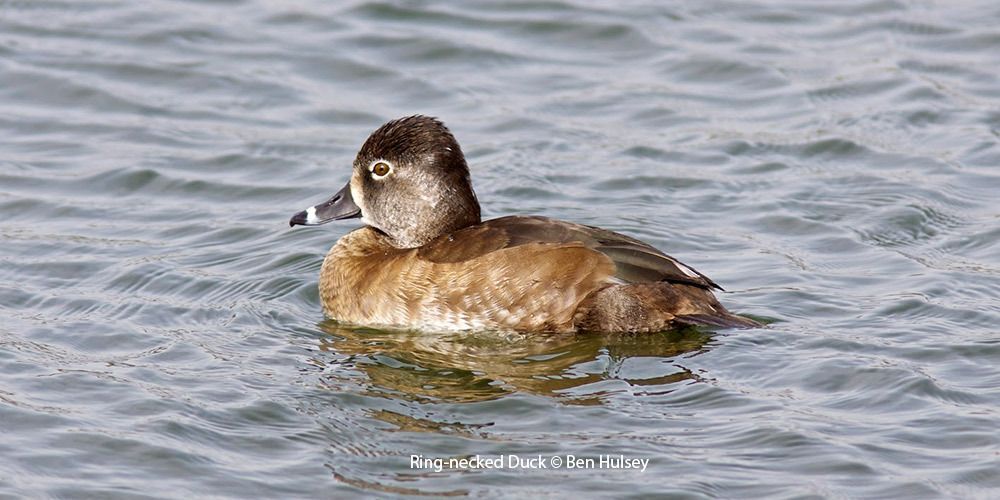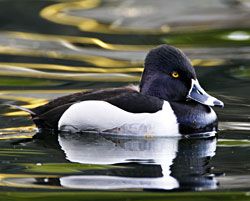
© David McDonald
Ring-necked Duck
Aythya collaris
Family: (Anatidae) Ducks, Geese, and Swans
Preferred Habitat: Freshwater marshes and woodland ponds
Seasonal Occurrence: Fairly common November through March
Notes: The Ring-necked Duck is a compact diving duck best identified by its distinctive tall head with a sharp peak on the rear crown. Males have dark heads, black blacks, and gray sides with a white spur at the front. Adult males have a gray bill with a prominent white ring at the base and white and black markings at the tip. Females are dark brown with a contrasting pale cheek and whitish eye ring. They have a grey bill with white and black marking at the tip. Despite their common and scientific (collaris) names, the faint burgundy ring around the base of their neck is rarely visible.
They are strong and fast fliers and are able to take flight by jumping up straight off the water, unlike other diving ducks which have to run up to take off.
Ring-necked Ducks breed on wooded lakes or ponds in the northern United States and Canada, from Alaska across southern, central and eastern Canada. They winter along the Gulf of Mexico and the southern Atlantic coast of the United States. Although their range is typically restricted to North America, vagrants are regularly reported in Central America as far south as Costa Rica, as well as occasional small flocks being reported in Scotland and Ireland. They sometimes flock with scaup or dabbling ducks. Look for them in shallow inland lakes, marshes, reservoirs or even flooded agricultural fields.
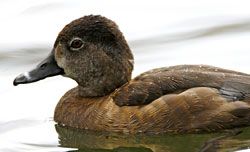
© David McDonald
Profile by Theresa Kelly: The Ring-necked Duck earned both its common and scientific name (collaris) from the chestnut collar on its black neck. Decidedly difficult to make out in the field, they are better identified by other traits. The Ring-necked Duck is a medium-sized diving duck with a peaked crown and strongly sloped forehead. Breeding males are black in the head, chest, and back, with pale gray sides, a white shoulder, and a glaring golden eye. Their bill is distinctly curved, with a bold white band separating the gray base from the black tip. Nonbreeding males are not as sharply colored, with dull brown sides and a fainter bill band, but they still possess the diagnostic peaked head and golden eye of breeding males. The red-brown body of female Ring-necked Ducks may resemble female Ruddy Ducks at first glance, though they possess the same hard-to-miss tricolored bill as the males. Females’ dark crown contrasts against their gray face, with a whiter patch near the bill that stands out even from a distance.
Ring-necked Ducks are often found in small flocks or pairs, sometimes intermingling with scaup or dabbling ducks. Despite being a diving duck, in winter and migration times they can be found on small, shallow bodies of water such as beaver ponds, small lakes, marshes, and even flooded agricultural fields. During fall migration, they sometimes form massive flocks, with several hundred thousand congregating on Minnesota lakes to feed on wild rice. Their nonbreeding range is expansive, covering nearly all of the southern US and Mexico, and they can also be found wintering in the Pacific Northwest, along the mid-Atlantic coast, and across large portions of Central America and the Caribbean Islands.
Usually omnivorous, Ring-necked Ducks eat aquatic vegetation (including stems, seeds, and tubers) as well as mollusks, snails, dragonfly nymphs, leeches, and earthworms. Interestingly, their diet can shift from season to season: animal food becomes a much bigger part of the diet for females during breeding season because it’s much higher in protein, while plant foods are more important during fall migration.
Houston Audubon staff recently (February 2015) found several Ring-necked Ducks feeding in a small pond just off of High Island beach. Though they are deemed rare, they can still be found in the Houston area through most of April. Over the coming weeks, keep an eye on freshwater marshes and retention ponds, because you never know what you might see popping up for air!
-
Cornell Lab of Ornithology
-
Bird Guide

© Greg Lavaty, www.texastargetbirds.com
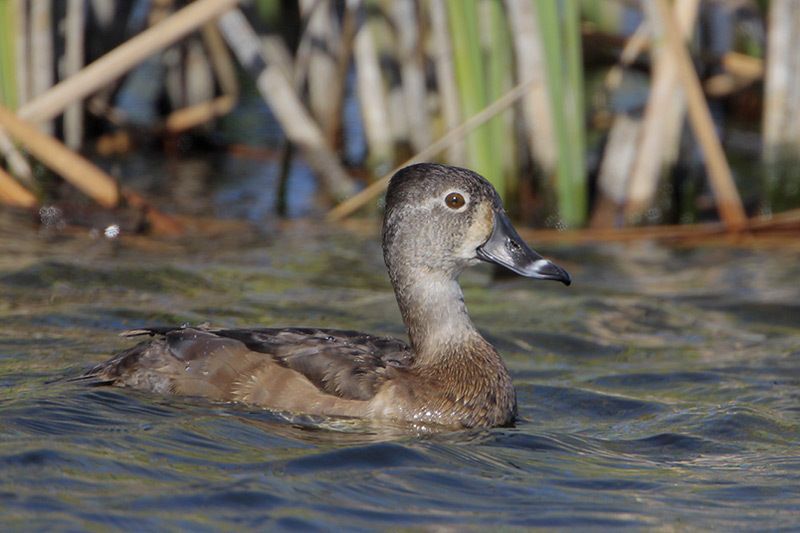
© Greg Lavaty, www.texastargetbirds.com
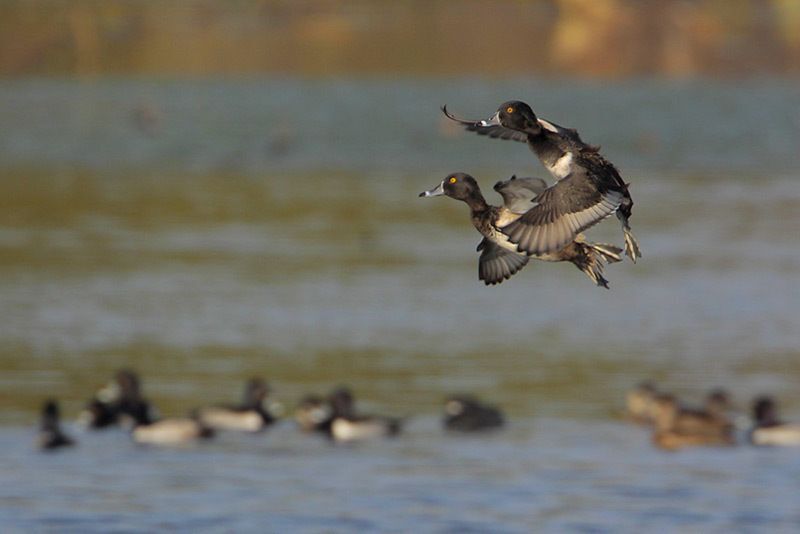
© Greg Lavaty, www.texastargetbirds.com

